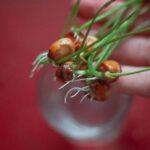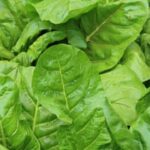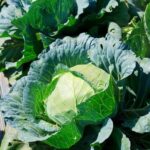Growing your own vegetables is a rewarding and fulfilling experience, but not everyone has access to traditional garden space. That’s where gardening in pots comes in as the perfect solution. Whether you have limited outdoor space, live in an apartment, or simply prefer the convenience of container gardening, growing vegetables in pots offers numerous benefits and opportunities.
Gardening in pots has become increasingly popular in recent years, and for good reason. It allows you to cultivate a bountiful vegetable garden on a small scale, making it accessible to anyone regardless of their living situation. By using containers, you can create your own mini garden right on your patio, balcony, or even indoors near a sunny window.
One of the great advantages of gardening in pots is that it gives you full control over the growing conditions and environment for your vegetables. You can easily tailor the soil composition, moisture levels, and sunlight exposure to suit the specific needs of each plant. Plus, container gardening allows for efficient use of water and fertilizer since you only need to provide resources directly to the pot rather than a large garden bed.
In this article, we will explore the many benefits of gardening in pots for growing vegetables. We will also provide practical tips on choosing the right containers, selecting suitable soil and fertilizer, selecting the best vegetables for potted growth, understanding sunlight requirements, caring for your plants through proper watering and maintenance techniques.
Additionally, we will discuss strategies for pest and disease management that are unique to container gardening. Finally, we will guide you through harvesting your homegrown bounty and offer suggestions on how to fully enjoy the delicious fruits of your labor.
Get ready to embark on a journey into the world of gardening in pots vegetables – a gratifying way to grow your own fresh produce no matter where you live.
Benefits of Gardening in Pots
Increased Accessibility and Convenience
One of the major benefits of gardening in pots is the increased accessibility and convenience it provides. Unlike traditional gardening methods that require large plots of land or dedicated garden beds, gardening in pots allows you to grow vegetables in even the smallest of spaces.
Whether you have a balcony, patio, or a tiny backyard, you can still enjoy the pleasure of growing your own vegetables. Not only does this make gardening more accessible for urban dwellers or those with limited outdoor space, but it also makes it easier for people with physical limitations or disabilities to engage in gardening.
Control Over Growing Conditions
Gardening in pots gives you greater control over the growing conditions for your vegetables. By choosing container gardens, you have complete authority over factors such as soil quality, moisture levels, and sunlight exposure. This level of control allows you to customize the conditions to suit the specific needs of each plant.
For instance, some vegetables thrive in well-draining soil, while others prefer a moister environment. Additionally, container gardens give you the flexibility to move your plants around based on changing weather conditions or to optimize sunlight exposure throughout the day.
Protection from Pests and Diseases
Another advantage of growing vegetables in pots is the enhanced protection it offers against pests and diseases. Container gardens provide a physical barrier between your plants and potential threats like insects or soil-borne diseases.
You can implement pest management strategies such as placing netting over your containers or using organic pest repellents without worrying about harmful chemicals affecting the rest of your garden. Moreover, when pests do become an issue, isolating affected containers can help prevent further infestations from spreading to other plants.
Choosing the Right Containers
When it comes to gardening in pots, selecting the right containers is essential for the success of your vegetable garden. The right pots can provide ample space for root growth, proper drainage, and the ability to retain moisture. Here are some important considerations to keep in mind when choosing the perfect pots for your vegetable garden.
Size and Depth
One of the most important factors to consider when choosing containers for your vegetable garden is size. The size of the pot will determine how much soil volume is available for your plants’ roots to grow. It is generally recommended to choose pots that are at least 12-14 inches deep, especially for vegetables with long taproots, such as tomatoes or carrots. For shallow-rooted vegetables like lettuce or herbs, a depth of 8-10 inches may be sufficient.
Drainage
Proper drainage is crucial for healthy plant growth and preventing waterlogging. Look for containers that have drainage holes at the bottom to allow excess water to escape. If you fall in love with a pot without drainage holes, you can either drill holes yourself or use it as an outer decorative container by placing a smaller plastic container with drainage holes inside.
Material
The material of the pot can affect its longevity and ability to retain moisture. Terra cotta pots are porous and help reduce overwatering by allowing excess moisture to evaporate through their walls. However, they tend to dry out faster and may require more frequent watering. Plastic containers are lightweight, affordable, and retain moisture well but make sure they have adequate drainage holes.
Multipurpose Pots
Consider investing in multipurpose pots that come with added features such as trellis systems or self-watering mechanisms. These types of containers can help maximize space and make maintenance easier by providing support for vine plants or reducing watering frequency.
When selecting pots for your vegetable garden, keep in mind the size and depth required for your specific vegetables, the importance of proper drainage, and the different material options available. By choosing the right containers, you will provide an ideal growing environment for your plants and set yourself up for a successful gardening experience.
Soil and Fertilizer Tips
When it comes to gardening in pots, selecting the right soil and fertilizer is crucial for the success of your potted vegetable garden. The type of soil and fertilizer you choose will directly impact the growth, yield, and overall health of your plants. In this section, we will explore some helpful tips for choosing the right soil and fertilizer for your potted vegetable garden.
Type of Soil
One of the key factors in ensuring healthy plant growth is selecting the appropriate type of soil for your potted vegetables. Potting mix or potting soil is generally recommended for container gardening because it is specifically formulated to provide a well-draining medium that retains moisture while allowing proper aeration for root development. Avoid using regular garden soil or topsoil as they tend to become compacted and may not drain adequately in containers.
When choosing potting mix, look for a high-quality mix that contains organic matter such as compost. This will help enrich the soil and improve its texture. Additionally, make sure that the potting mix is sterilized to minimize the risk of introducing pests, diseases, or weed seeds into your container garden.
Fertilizer Selection
Feeding your potted vegetable plants with a balanced fertilizer is essential for their optimal growth and productivity. The choice of fertilizer depends on various factors such as the nutrient requirements of specific vegetables, container size, and growing conditions.
Organic fertilizers are often preferred by many gardeners as they are slow-release and provide a steady supply of nutrients over time. Some popular organic fertilizers include compost tea, fish emulsion, worm castings, or well-rotted manure.
Alternatively, you can opt for synthetic fertilizers specifically designed for container gardening. These are often water-soluble and can be easily absorbed by plants. When using synthetic fertilizers, it is important to follow the manufacturer’s instructions carefully to avoid over-fertilization, which can lead to nutrient imbalances and damage your plants.
Fertilizer Application
Proper application of fertilizer is key to ensuring that your potted vegetables receive the necessary nutrients for healthy growth. It is generally recommended to apply a balanced, slow-release fertilizer at the time of planting. This will provide a steady supply of essential nutrients over an extended period.
In addition to initial fertilization, regular feeding throughout the growing season is essential for maintaining plant vigor and productivity. Consider using a liquid fertilizer every two to four weeks or as recommended by the product label.
When applying fertilizer, be mindful not to overapply as this can burn the roots and harm your plants. Always follow the recommended dosage instructions provided on the package, paying attention to factors such as container size and plant requirements.
By selecting the right soil and fertilizer for your potted vegetable garden and providing proper nourishment, you can ensure that your plants thrive and produce a bountiful harvest. Remember to monitor your plants closely, adjust fertilization as needed, and enjoy the satisfaction of growing your own fresh vegetables in containers.
Successful Vegetable Selection
Growing vegetables in pots provides flexibility and convenience for aspiring gardeners. However, not all vegetables thrive in container gardening. Choosing the right vegetables for your potted garden is crucial to ensure a successful yield. In this section, we will explore the best vegetables for growing in pots and how to choose the right varieties.
When selecting vegetables for your potted garden, it is essential to consider their size and growth habits. Compact varieties are ideal for container gardening as they have shallower root systems and do not require as much space as their larger counterparts. Leafy greens such as lettuce, spinach, and kale are excellent options that can be grown successfully in pots. Other suitable choices include herbs like basil, parsley, and chives.
Tomatoes are another popular choice for potted vegetable gardening but require larger containers due to their indeterminate growth habit. Determinate tomato varieties are more manageable in size and work better for smaller containers. Peppers, eggplants, zucchini, and bush beans are also well-suited for container gardening.
Furthermore, it is essential to choose disease-resistant varieties when growing vegetables in pots. Since container gardening can create a more controlled environment with limited air circulation, disease prevention is crucial. Look for vegetable varieties labeled with resistance to common diseases such as blight or powdery mildew.
When selecting your vegetable seedlings or seeds, opt for those specifically labeled as suitable for container gardening or patio gardens. These varieties are specially bred or selected to perform well in confined spaces and have adapted to thrive in pots.
By carefully choosing the right vegetables and varieties suited for container gardening, you can ensure a successful harvest from your potted garden. With careful planning and selection, you’ll enjoy an abundance of fresh homegrown vegetables right at your fingertips.
Container Placement and Sunlight Requirements
Proper container placement and sunlight requirements are crucial for the success of your potted vegetable garden. The right amount of sunlight is essential for optimal growth and the development of flavorful vegetables. Understanding the importance of proper sunlight and placement will help you make informed decisions when setting up your container garden.
When it comes to container placement, it’s important to consider the direction of the sun throughout the day. Most vegetables require at least 6 hours of direct sunlight daily, while some may even need more. Therefore, you should place your containers in an area that receives ample sunlight, such as a patio, balcony, or rooftop that isn’t shaded by buildings or trees.
To maximize sunlight exposure and ensure even growth, rotate your pots every few days to avoid one side receiving more light than the other. This will promote uniform growth and prevent plants from leaning towards the light source. Additionally, consider using reflective surfaces like mirrors or white walls to redirect sunlight onto your plants if your growing area doesn’t receive sufficient light.
It’s also important to note that different vegetables have varying sunlight requirements. Leafy greens like lettuce and spinach can tolerate slightly shady conditions and thrive with 4-6 hours of direct sunlight. On the other hand, fruiting vegetables like tomatoes and peppers require full sun for a minimum of 8 hours per day to produce abundant yields. Take into account these differences when selecting which vegetables to grow in your potted garden.
Key Points
- Place your containers in an area that receives at least 6 hours of direct sunlight daily.
- Rotate your pots every few days to ensure even growth.
- Use reflective surfaces to redirect sunlight onto your plants if needed.
- Consider the varying sunlight requirements of different vegetables when choosing what to grow in containers.
By understanding the importance of container placement and sunlight requirements, you are taking a critical step towards maximizing the growth and productivity of your potted vegetable garden. With proper attention to these factors, you can create an ideal environment that will promote healthy plants and bountiful harvests.
Watering and Maintenance
Watering and maintenance are crucial aspects of caring for potted vegetables. Proper watering ensures that your plants receive adequate hydration and nutrients, while maintenance tasks help keep your plants healthy and thriving. Follow this step-by-step guide to effectively care for your potted vegetables:
- Establish a watering routine: It is important to establish a regular watering routine for your potted vegetables. Generally, containers tend to dry out faster than traditional garden beds, so they may require more frequent watering. Check the moisture level of the soil by sticking your finger about an inch deep into the soil. If it feels dry, it’s time to water.
- Use proper watering techniques: When watering potted vegetables, use a slow and steady technique to ensure that the water is evenly distributed throughout the container. Water until you see moisture coming out of the drainage holes at the bottom of the pot, indicating that the soil has been thoroughly moistened.
- Avoid overwatering: Overwatering can lead to root rot and other fungal diseases in potted vegetables. To prevent overwatering, make sure that your containers have proper drainage holes to allow excess water to escape. Additionally, be mindful not to water too frequently or allow water to sit in saucers beneath the pots.
- Mulch and maintain moisture: Applying a layer of organic mulch around your potted vegetables can help retain moisture in the soil and reduce evaporation. Mulching also helps suppress weed growth and insulate plant roots from temperature fluctuations.
- Regularly monitor for pests and diseases: Regularly inspect your plants for any signs of pests or diseases such as yellowing leaves, spots, or wilting foliage. Catching these issues early can prevent them from spreading to other plants.
- Provide additional support: As your vegetable plants grow, they may require extra support to stay upright. Install stakes or trellises alongside taller vegetable varieties such as tomatoes or beans to prevent the plants from toppling over. Secure the stems gently to avoid damaging them.
Maintaining and caring for your potted vegetables may require a bit of effort, but the rewards are well worth it. By following these steps, you can ensure that your plants receive the necessary care and attention they need to thrive and provide you with delicious homegrown vegetables. So grab your watering can and get ready to enjoy the bountiful harvest from your potted vegetable garden.
Pest and Disease Management
One of the potential challenges that gardeners may face when growing vegetables in pots is pest and disease infestations. However, with proper prevention and management techniques, these issues can be addressed effectively to ensure the health and vitality of your potted vegetable garden.
Prevention is the key to minimizing pest and disease problems in container gardening. Start by selecting healthy plants and high-quality potting soil that is free from pests or diseases. It is also advisable to clean and disinfect your containers before each new planting season to reduce the risk of contamination.
Regular monitoring of your potted vegetables is crucial in identifying any signs of pests or diseases early on. Inspect both the plant foliage as well as the soil for any abnormal symptoms such as discoloration, wilting, chewing or tunneling marks, spots, or visible pests. By spotting these issues early, you can take prompt action to prevent further damage.
When it comes to dealing with common pests in container gardening, there are several methods you can employ. One approach is using organic pest control methods such as handpicking pests off plants, using insecticidal soaps or oils, or introducing beneficial insects like ladybugs or lacewings that feed on garden pests. Additionally, physical barriers like nets or row covers can be used to prevent pests from accessing your plants.
As for diseases that may affect your potted vegetables, practicing good hygiene measures can help minimize their occurrence. Avoid over-watering as it creates a humid environment that promotes fungal growth. Proper air circulation around your containers also helps reduce the likelihood of fungal infections. If you do notice signs of disease on your plants, remove infected parts promptly and dispose of them properly to prevent its spread.
| Common Pests | Common Diseases |
|---|---|
| Aphids | Fungal diseases (e.g., powdery mildew, leaf blight) |
| Caterpillars | Bacterial diseases (e.g., bacterial spot, soft rot) |
| Slugs and snails | Viral diseases (e.g., mosaic virus, tomato yellow leaf curl virus) |
By implementing preventive measures and taking appropriate action against common pests and diseases in container gardening, you can ensure that your potted vegetable garden thrives and produces a bountiful harvest. Vigilance and regular maintenance are key to enjoying healthy and vibrant vegetables grown right in the convenience of your own home.
Harvesting and Enjoying Your Homegrown Bounty
Harvesting and enjoying the fruits of your labor is one of the most satisfying aspects of gardening. When it comes to potted vegetables, there are a few tips and tricks to ensure you get the most out of your homegrown bounty.
Firstly, it’s important to know when to harvest your potted vegetables. Each type of vegetable has its own specific harvesting time, which can be influenced by factors such as weather conditions and growing medium.
Generally, vegetables should be harvested when they have reached their desired size or color, and before they become overripe or start to decay. It’s a good idea to refer to seed packets or do some research on the vegetable varieties you are growing to determine the optimal time for harvest.
When harvesting your potted vegetables, it’s best to use a sharp pair of garden shears or pruners to cut the stems cleanly without damaging the plant. Many leafy greens can be harvested by simply cutting off outer leaves as needed, allowing the center of the plant to continue growing.
For root vegetables such as carrots or radishes, gently pull them out of the soil after loosening it with a fork. Take care not to damage any neighboring plants in the process.
Once you have harvested your delicious potted vegetables, it’s time to enjoy them. Freshly picked vegetables often taste best when consumed shortly after harvest. Whether you decide to cook them up in a meal or enjoy them raw in a salad, nothing beats the flavor and nutritional value of homegrown produce. Remember that different vegetables require different cooking methods and durations, so be sure to look up recipes or experiment with different techniques based on what you have harvested.
Gardening in pots allows you full control over your vegetable garden and provides an opportunity for anyone with limited space to still enjoy homegrown produce. By following these tips for harvesting and utilizing your potted vegetables, you can make the most out of your gardening endeavors and have the satisfaction of enjoying fresh, flavorful vegetables that you grew yourself. So get out there and start harvesting your own homegrown bounty, and discover the pleasure of gardening in pots.
Conclusion
In conclusion, gardening in pots offers a convenient and rewarding solution for growing vegetables. The benefits of container gardening are numerous, as it allows individuals with limited space or mobility to still enjoy the pleasures of nurturing and harvesting their own produce. By choosing the right containers and understanding soil and fertilizing needs, anyone can create a thriving vegetable garden in pots.
Selecting the appropriate vegetables for container gardening is essential for success. Choosing varieties that are suited to container growth will ensure optimal yield and health. Additionally, proper placement of containers in relation to sunlight exposure is crucial for promoting healthy growth and ensuring the plants have all the necessary resources they need to thrive.
Caring for potted vegetables involves regular watering and monitoring for pests and diseases. By following a consistent maintenance routine, gardeners can promote vigorous growth while preventing common issues that can derail their efforts. When it comes time for harvest, there is nothing quite like the satisfaction of enjoying homegrown vegetables straight from your own pot.
Overall, gardening in pots is an accessible way for individuals with different lifestyles and living situations to experience the joy of cultivating their own fresh, homegrown vegetables. It offers countless advantages, from its versatility to its ease of care. So whether you have a small balcony or a sprawling backyard, don’t hesitate to embrace the world of container gardening and reap the rewards of delicious produce right at home.
Frequently Asked Questions
Which vegetables are best to grow in pots?
When it comes to growing vegetables in pots, there are several options that perform exceptionally well. Leafy greens like spinach, lettuce, and kale are fantastic choices as they have shallow root systems and can thrive in smaller containers. Tomatoes also fare well in pots, preferably compact varieties or dwarf cultivars.
Peppers, both sweet and hot, can be grown successfully in pots too. Additionally, herbs such as basil, mint, and parsley flourish when grown in containers. These vegetables and herbs offer a great starting point for anyone looking to grow their own produce in pots.
Do vegetables grow well in pots?
Yes, vegetables can indeed grow well in pots if proper care is taken. While some plants may prefer the expansiveness of a traditional garden bed, many vegetables adapt beautifully to container gardening.
Growing vegetables in pots provides numerous advantages such as better control over soil quality and drainage as well as the ability to move the plants around for optimal sunlight exposure. With appropriate pot size selection, suitable soil mix, regular watering and fertilization routine, along with adequate sunlight and temperature conditions, it is entirely possible to achieve a bountiful harvest from potted vegetable plants.
How deep do pots need to be for vegetables?
The depth of pots needed for growing vegetables largely depends on the specific type of vegetable being cultivated. In general, most small to medium-sized vegetable plants require a minimum pot depth of 8-10 inches (20-25 centimeters) to accommodate their root systems adequately.
However, larger plants like tomatoes or peppers may need deeper containers ranging from 12-18 inches (30-45 centimeters) or even more depending on their size and variety requirements. It’s important to consider the specific needs of each vegetable plant regarding root development when selecting the appropriate depth for pots – providing sufficient space allows for healthy growth and optimal nutrient uptake from the soil mixture within the container.

If you’re looking to get into vegetable gardening, or are just looking for some tips on how to make your current garden better, then you’ve come to the right place! My name is Ethel and I have been gardening for years. In this blog, I’m going to share with you some of my best tips on how to create a successful vegetable garden.





